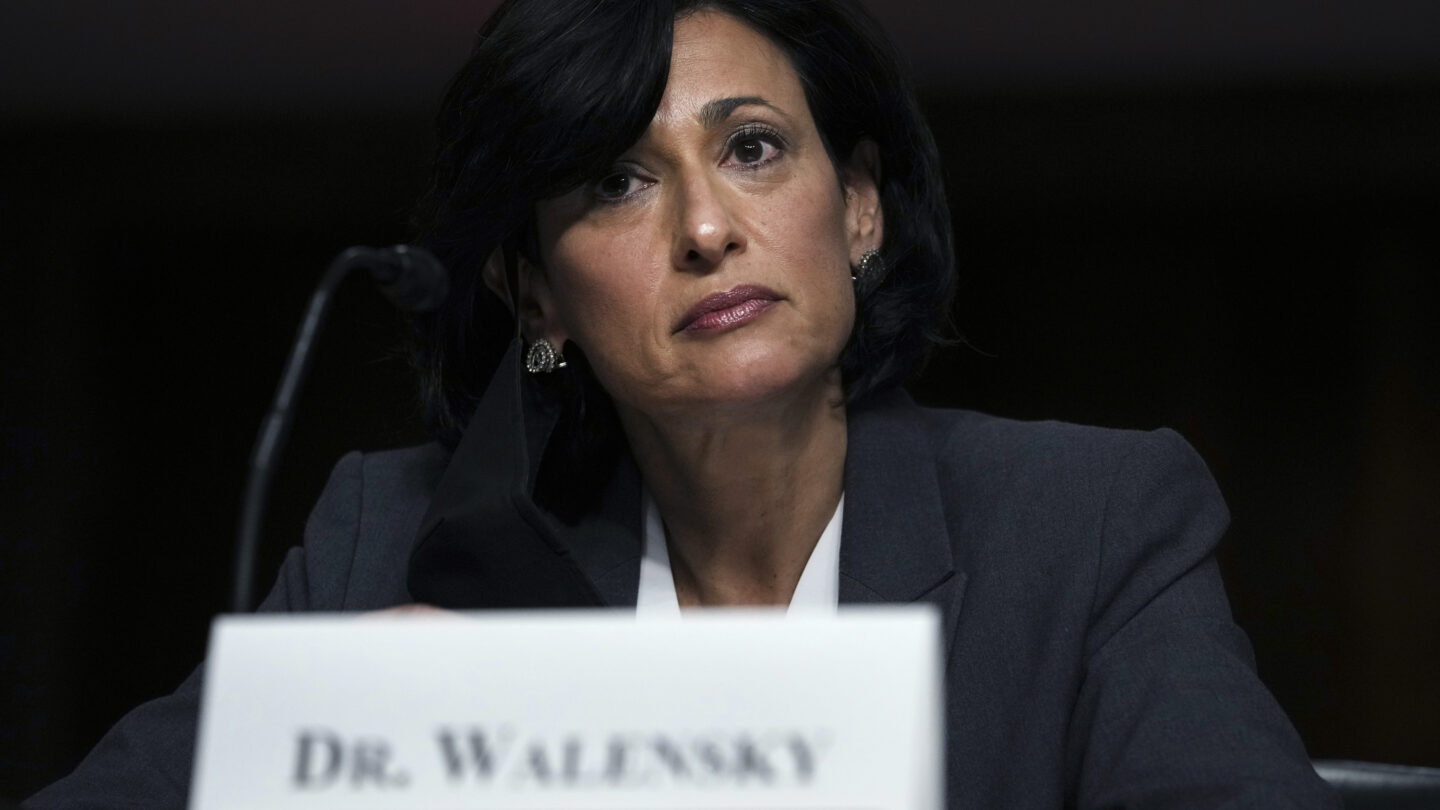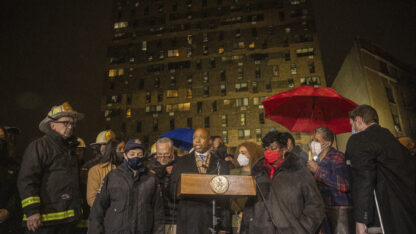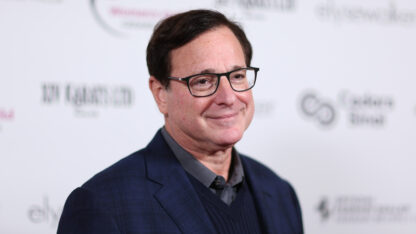An unmet promise
In fact, the Biden administration has repeatedly promised to put career scientists front and center in its COVID communications. But such experts have generally not appeared outside of White House COVID-19 Response Team briefings, usually held several times each week but typically only featuring political appointees, Walensky among them.
That’s not the same as a briefing by subject matter experts, sharing what they know with the press and the public.
“The fact is, there are dedicated scientists at CDC who are the world’s experts in a lot of these issues, and they need to be speaking directly to the public along with Dr. Walensky,” says Dr. Tom Frieden, CDC director during the Obama administration, who now runs Resolve to Save Lives, an initiative to help governments and outside groups prevent epidemics.
CDC is responding to these charges of inadequate communication. The agency decided to hold Friday’s briefing, Walensky told reporters on the call, because “we had heard clearly over the last week that there was interest in hearing from us independently.”
“This is hard and I am committed to continue to improve,” she said. “I anticipate that this will be the first of many briefings, and I very much look forward to them.”
Frieden is on board: “I hope this will be an inflection point in rebuilding confidence in CDC,” he says. “The more CDC can speak directly to the public following its own principles of communication in a health emergency, the better off we’ll all be.”
For CDC, COVID-19 briefings have been unusually sparse
The idea of speaking out during a public health crisis is hardly new. “CDC literally wrote the book on how to communicate in a health emergency,” says Frieden. It has clear principles to uphold, he says: “Be first, be right, be credible, be empathetic and give people practical, proven things to do to protect themselves, their families and their communities.”
Glen Nowak, who used to run media relations for the agency, says press briefings are an important part of its mission. “Typically, if there is some health development where it makes sense to notify the American public and give them recommendations and guidance as to what they should do about it, then press briefings are really helpful,” he says.
When the H1N1 outbreak began in 2009, “we did a press conference every single day for eight weeks, including weekends,” Nowak says. “We did press conferences as long as we had something that was new, something that was different, there was a need to do it.”
The idea wasn’t just to inform the public. At media briefings, says Frieden, “oftentimes, smart journalists ask tough questions, and we’d realize, ‘Oh, we didn’t say that as clearly as we intended,’ or, ‘We didn’t think of that, we’d better address that issue.’ “
When SARS-CoV-2 was identified in China, CDC seemed to follow playbook.
In mid-January 2020, Dr. Nancy Messonnier, then director of CDC’s National Center for Immunization and Respiratory Diseases, led the first CDC telebriefing on the subject. She was joined by another career scientist, Dr. Marty Cetron, director of CDC’s Division of Global Migration and Quarantine.
“Since the outbreaks of MERS and SARS, we have made improvements in our capacity in the United States and around the world,” Messonnier told reporters. “We’re now better poised to respond to this new threat quickly and collaboratively.”
These briefings continued every few days, until one of them jolted America to attention. On Feb. 25, 2020, Messonnier warned “this could be bad.”
“I had a conversation with my family over breakfast this morning, and I told my children that while I didn’t think that they were at risk right now, we as a family need to be preparing for significant disruption of our lives,” she said.
After her comments, financial markets crashed. President Donald Trump, whose message was that the pandemic was of little concern and under control, was so angry at Messonnier that he reportedly wanted her fired. The next day, he put Vice President Mike Pence in charge of the White House coronavirus task force. Televised COVID-19 briefings became a White House affair. The CDC director was not usually present.
The CDC telebriefings did continue for a while — although only occasionally.
Under Biden, CDC still seems sidelined
President Biden came into office promising to beat the pandemic by restoring public trust.
“Scientists and public health experts will speak directly to you — that’s why you’re going to be hearing a lot more from Dr. Fauci again — not from the president but from the real genuine experts and scientists,” Biden pledged the day after his inauguration.
Certainly, Americans have heard a lot from Dr. Anthony Fauci of NIH — the president’s chief medical adviser — and CDC’s Walensky. Both are frequent guests on TV news shows and in White House COVID-19 Response briefings, which are usually held several times a week.
But, under Biden, CDC and its career scientists seem to still be sidelined. CDC has actually done fewer telebriefings on the pandemic under Biden.
In 2020, under Trump, there were around two dozen CDC telebriefings.
In 2021, under Biden, there were two.
Dr. Celine Gounder, an infectious disease specialist and epidemiologist at NYU who considers Dr. Walensky a mentor, says she has been hoping to hear more from CDC’s career scientists in the new administration.
“I would love to hear more from them just about — what is the science that they’re doing? How do they go about it? What is their process?” she says. “I think there is something to be said for also just putting a human face on some of this,” she adds, which the public does not get when guidance changes happen via the CDC website.
She calls Walensky’s promise to bring back regular briefings “good news.”
Politics and a pandemic aren’t necessarily good bedfellows
The administration seems to be treating the pandemic as a political problem that has to be managed in a political way, says Gregg Gonsalves, an epidemiologist at Yale.
“There needs to be a lot more openness and transparency from the White House, and they need to let their scientists off the leash,” he says.
One overriding issue may be a clash between politics and public health.
Political messages need to be simple. But that doesn’t work for infectious disease messaging, says Nowak. “The situation is much more dynamic — viruses change a lot and can change in ways that render your recommendations not so effective,” he says. “With infectious disease communications, you really have to acknowledge uncertainty.”
Yet over the 14 years he worked at CDC, across Democratic and Republican administrations, he says the trend seemed to be for the White House to exert more and more strict control over messaging.
“You have to be willing to trust that the scientists and the experts who are doing those briefings are going to do what needs to be done,” he says. “And this administration is not unique, not by any stretch of imagination in terms of their willingness to trust career scientists.” Which is to say, they don’t seem to trust them very much, he adds.
Walensky’s pledge to hold more briefings “is a helpful development,” he says. “The question is going to be the frequency that they commit to holding regular press briefings, what the topics are, what the messages are.”
CDC didn’t respond to NPR’s question about how often the agency plans to hold agency-led briefings.
Frieden hopes that CDC will live up to its promise and speak directly to the public more often.
“It’s better for everyone,” he says. “It’s better for CDC because they can explain themselves. It’s better for the administration because you’re better off if you have a CDC that people trust. And it’s better for the public because you can understand the guidance.”









